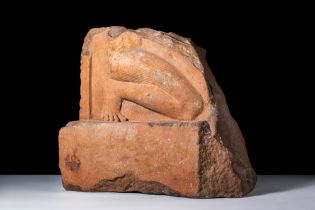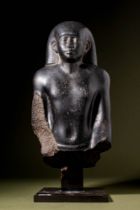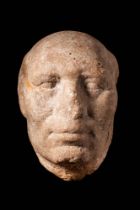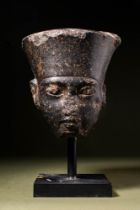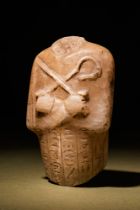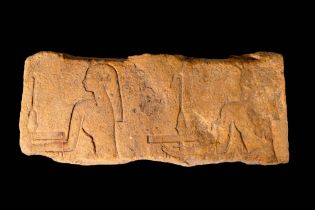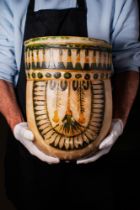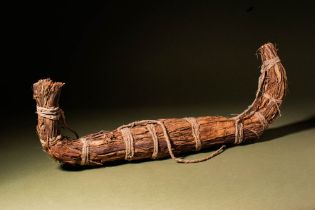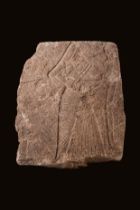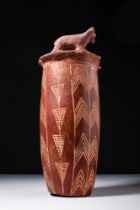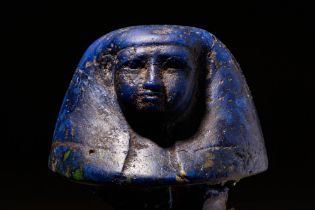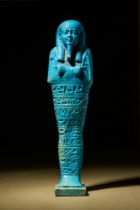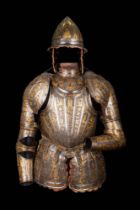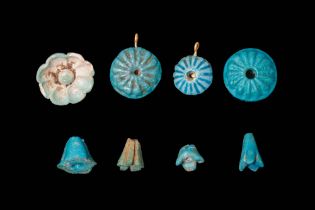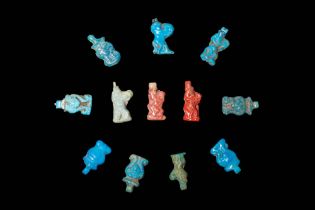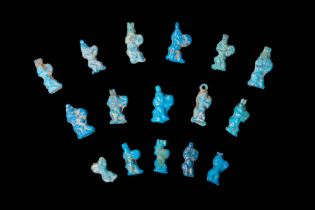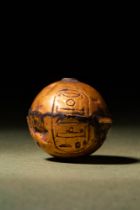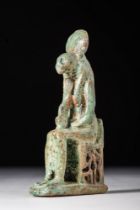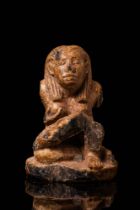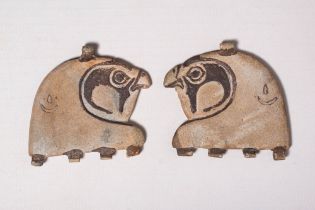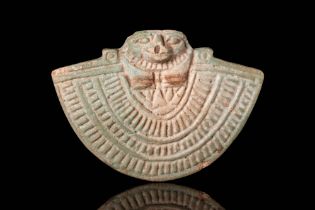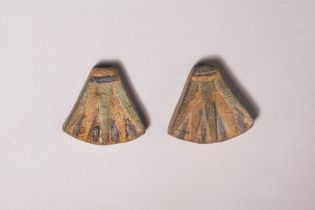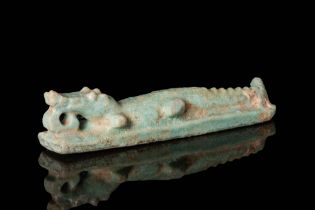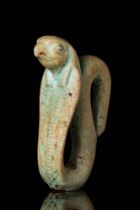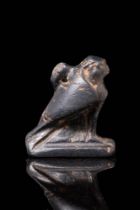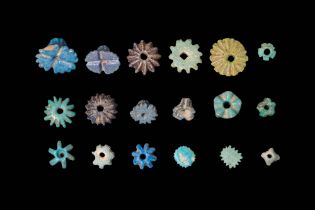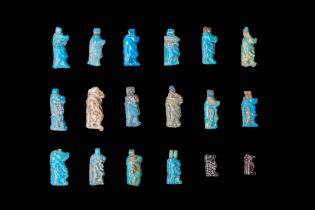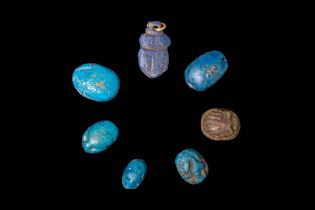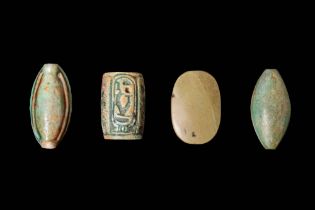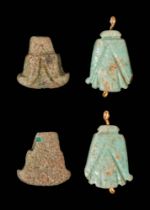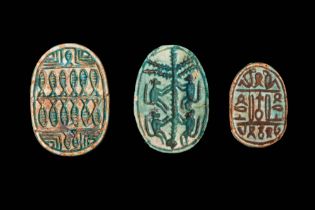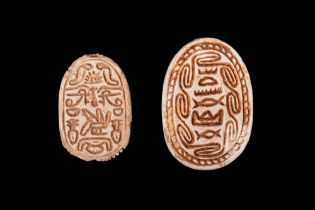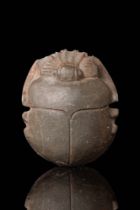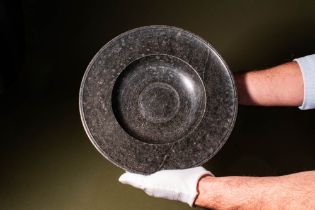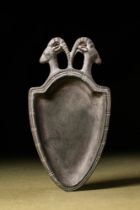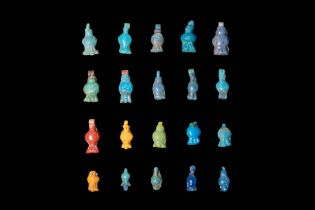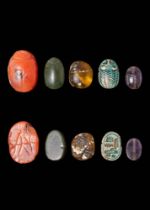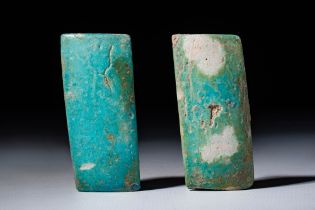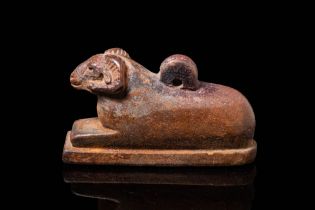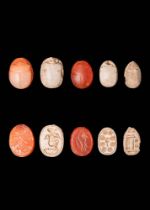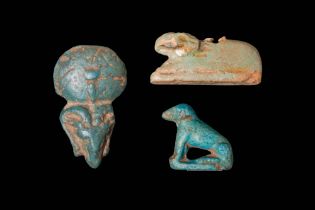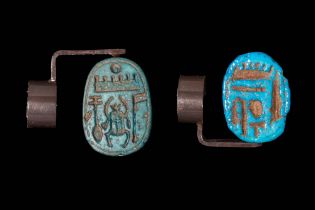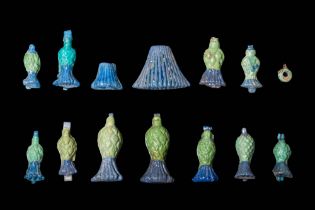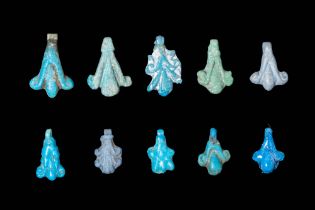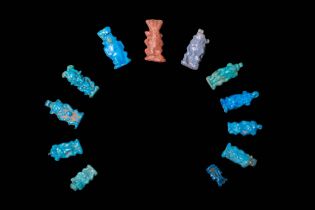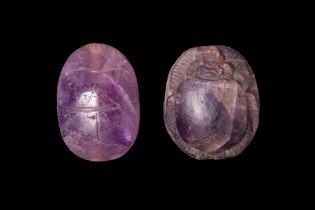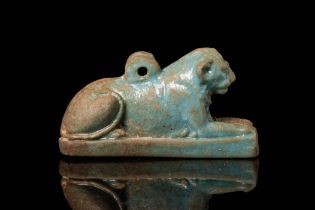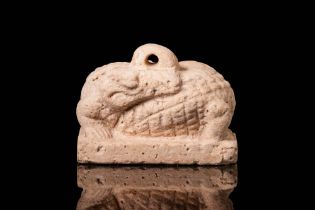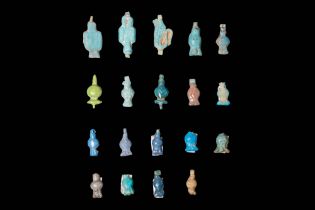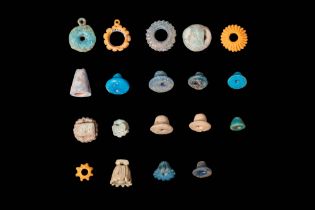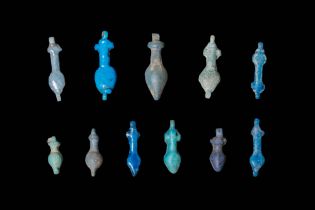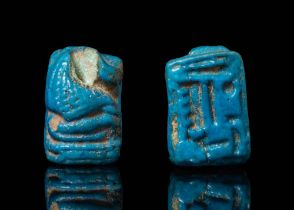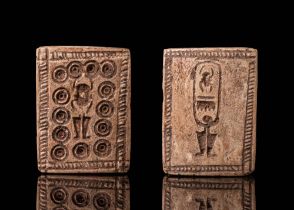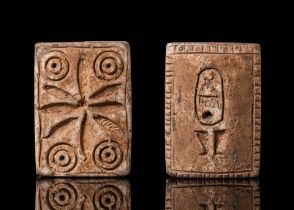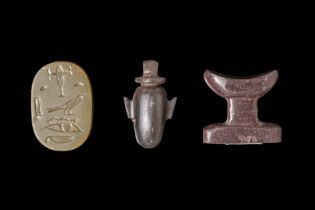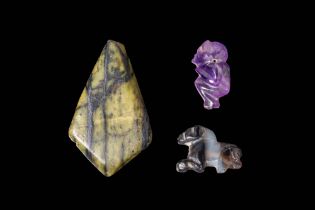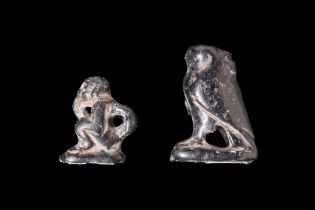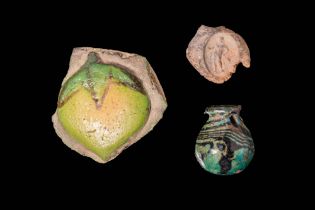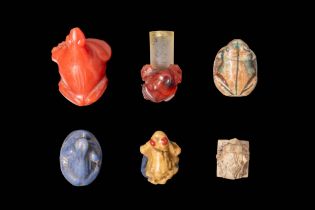Refine your search
Sale Section
- African Art (1)
- Bactrian (2)
- Bronze Age (1)
- Byzantine (3)
- Celtic (1)
- Egyptian (159)
- Etruscan (1)
- Graeco-Roman (1)
- Greek (14)
- Indian (2)
- Islamic Art (1)
- Mamluk (3)
- Medieval (3)
- Mesopotamian (3)
- Metalware (1)
- Near Eastern (1)
- Neolithic (3)
- Phoenician (4)
- Pre-Columbian (1)
- Roman (33)
- Romano-Egyptian (12)
- Sasanian (2)
- Seljuk (1)
- Sumerian (1)
- Weaponry (1)
- 中文 (4)
Estimate
Category
- Greek, Roman, Egyptian & other antiquities (79)
- Taxidermy & Natural History (76)
- Jewellery (60)
- Sculpture (35)
- Glassware (34)
- Arms, Armour & Militaria (18)
- Collectables (17)
- Chinese Works of Art (15)
- Clocks (14)
- Books, Manuscripts & Periodicals (12)
- Ceramics (11)
- Salvage & Architectural Antiques (10)
- Porcelain (6)
- Islamic Works of Art (4)
- Kitchenalia (4)
- Vintage Fashion (3)
- Russian Works of Art (2)
- Scientific Instruments (2)
- Sporting Memorabilia & Equipment (2)
- Ethnographica & tribal art (1)
- Furniture (1)
- Indian Works of Art (1)
- Lighting (1)
- Oil, Acrylic paintings & Mixed Media (1)
- Textiles (1)
Creator / Brand
Item Type
- Amulet (50)
- Necklaces, Pendants & Medallions (43)
- Pendant (39)
- Ring (21)
- Scarab (21)
- Necklace (20)
- Beads (13)
- Knives and Blades (11)
- Bowl (9)
- Letter (8)
- Bottle (7)
- Earrings (7)
- Chinese Art by Period / Style (6)
- Gold Ring (6)
- Tile (6)
- Axe (5)
- Bust (5)
- Figurine (5)
- Glass Bottle (5)
- Sword (5)
- Taxidermy (5)
- Vessel (5)
- Band (4)
- Bracelet (4)
- Dagger (4)
- Flask (4)
- Gemstone (4)
- Jar (4)
- Knives (4)
- Lamp (4)
- Shabti (4)
- Statuette (4)
- Ushabti (4)
- Armour (3)
- Ceramic Tile (3)
- Figure (3)
- Fish (3)
- Fish Taxidermy (3)
- Glass Jug (3)
- Jug (3)
- Krater (3)
- Plate (3)
- Spearhead (3)
- Turquoise (3)
- Amethyst (2)
- Beaker (2)
- Bear (2)
- Bear Taxidermy (2)
- Brooch (2)
- Brooches (2)
- Carving (2)
- Ceramic Bowl (2)
- Chinese Lamp (2)
- Cup (2)
- Dish (2)
- Glass Beaker (2)
- Glass Bowl (2)
- Glass Plate (2)
- Helmet (2)
- Militaria (2)
- Military Helmet (2)
- Mineral (2)
- Patera (2)
- Pin (2)
- Sculpture (2)
- Spear (2)
- 19th-21st Century Art (1)
- Bangle (1)
- Bangles (1)
- Belt (1)
- Book (1)
- Ceramic Cup (1)
- Ceramic Dish (1)
- Ceramic Urn (1)
- Chain (1)
- Chamfron (1)
- Chinese Incense Burner (1)
- Collar (1)
- Flares (1)
- Gold Pendant (1)
- Haematite (1)
- Incense Burner (1)
- Intaglio (1)
- Islamic Art by Period / Style (1)
- Islamic Bowl (1)
- Jasper (1)
- Keyring (1)
- Knife (1)
- Lance (1)
- Medallion (1)
- Other Furniture (1)
- Pauldron (1)
- Pedestal (1)
- Rosette (1)
- Shield (1)
- Shiva (1)
- Shuriken (1)
- Silver Brooch (1)
- Silver Ring (1)
- Skyphos (1)
- Spoon (1)
- Stele (1)
- Tableware (1)
- Terracotta Figure (1)
- Tiles (1)
- Trousers (1)
- Urn (1)
- Utensil (1)
- Vase (1)
- List
- Grid
New Kingdom, XVIII-XIX Dynasties (Ca. 1350 - 1290 BC). A spectacular and well-preserved base fragment of a huge statue. Displaying a finely pleate...
Thebes, early Ptolemaic Period, Ca. 305 - 200 BC. An exceptional and very well-preserved basalt statue in the name of the priest Pa-khar-Khonsu. I...
Ptolemaic Period, Ca. 400 BC. A granite head of a priest. The partial baldness of the official indicates maturity, with tufts of hair retained abo...
Late 18th Dynasty, Ca. 1336 - 1295 BC. A remarkably rare black stone (granodiorite) head of god Amun, with a braided beard and a flat cap. His sma...
18th Dynasty, Ca. 1360 - 1349 BC. An Exceptional alabaster royal shabti of the Pharaoh Amenhotep III "The Magnificent". The Pharaoh is depicted as...
New Kingdom, Ca. 1550 - 1069 BC. An incredible Egyptian limestone rectangular stele carved with elaborate figures. The main scene features two lef...
New Kingdom, Ca. 1279 - 1152 BC. An extraordinary conical shaped alabaster vessel with a hemispherical bottom and high vertical walls. The vessel ...
Middle Kingdom, Ca. 2055 - 1790 BC. An incredibly rare papyrus model of a boat composed of papyrus fibres in the shape of a boat with an enlarged ...
New Kingdom, Ca. 1353 - 1336 BC. A fragment of a tomb relief depicting a nobleman as a chair bearer. The man has a shaved head and wears a sumptuo...
Naqada, Ca. 3600 BC. An exceptionally rare tubular ceramic vessel with a flat base, rounded walls and a tapered lower section. The everted rim is ...
New Kingdom, Ca. 1279 - 1152 BC. A glass stopper from a canopic jar. It is carved in the form of the human-headed deity Imsety, one of the Four So...
26th Dynasty, probably reign of Amasis, Ca. 570 - 526 BC. A bright blue faience shabti of Psamtik, God's Father, born to Seba-rekhyet. He is stand...
Ca. AD 1590. An incredible half-suit of infantry armour, the whole surface of each piece having been lavishly etched and gilt. The central boss o...
New Kingdom, Ca. 1550 - 1069 BC. A collection of eight faience flower-shaped amulets including one eight-petalled flower amulet sculpted with a ra...
New Kingdom, Ca. 1550 - 1069 BC. A collection of 12 faience amulets including six amulets depicting the head of Hathor, shown en face with a suspe...
New Kingdom, Ca. 1550 - 1069 BC. A collection of 16 blue faience amulets. Each amulet depicts Bes, the dwarf god, playing a tambourine. Bes is sho...
New Kingdom, Ca. 1279 - 1152 BC. A hollow gold bead, spherical in shape, composed of two joined halves. The surface bears a cartouche, likely attr...
Late Period, Ca. 664 - 332 BC.A pale green faience statuette depicting the seated goddess Sekhmet, with a sun disc on her head. The throne feature...
Ca. 2055 - 1069 BC. A stamp seal inscribed with hieroglyphic inscription domed with a statue of Isis Lactans seated frontally with crossed legs an...
Middle Kingdom, Ca. 2055 - 1069 BC. A pair of falcon head terminals originating from a Usekh collar. Each terminal has a flat section and is natur...
Ca. 664 - 332 BC. A pale green faience amulet in the form of a pectoral with stylised beads topped with a baboon/Thoth head; the verso has unadorn...
New Kingdom, 18th Dynasty, Amarna Period, Reign of Akhenaten, Ca. 1351 - 1334 BC. A pair of polychrome faience lotus terminals. Both comprise of a...
Ca. 664 - 332 BC. A faience amulet of a crocodile featuring an elongated body with detailed naturalistic characteristics. The amulet is pierced in...
Ca. 664 - 332 BC. A mould-formed faience amulet depicting a cobra with its falcon head and tripartite wig. A pierced suspension loop is integral t...
Ca. 664 - 30 BC. A small amulet carved from black hardstone depicting the god Horus in the shape of a falcon. The dignified falcon stands tall ato...
New Kingdom, Ca. 1550 - 1069 BC. A collection of eighteen decorative beads with glazes ranging from blue to greenish tones. The designs include ci...
New Kingdom, Ca. 1550 - 1069 BC. A collection of 18 faience amulets. Each amulet represents Taweret, the goddess of childbirth and fertility. She ...
Ca. 1550 - 332 BC. A collection of six scarabs made from greenish and blue faience, each featuring a drilled hole. Some are engraved with hierogly...
Ca. 1550 - 30 BC. A collection of four scarabs, the first and four scarabs have an elongated almond shaped body. Beneath the domed insects are hie...
Ca. 664 - 30 BC. A pair of glazed faience lotus flower amulets, each with a flat form and incised petal details. Both amulets are pierced lengthwi...
Late Middle Kingdom to Second Intermediate Period, Ca. 1850 - 1550. A collection of three scarabs made from glazed steatite, each featuring a dril...
Late Middle Kingdom to Second Intermediate Period, Ca. 1750 - 1550 BC. A pair of scarabs crafted from steatite, each featuring a drilled hole and ...
EGYPTIAN BLACK STONE SCARAB
Late Period, Ca. 664 - 332 BC. A scarab with an ovoid body, carved from green/black stone presenting pleasingly smooth surfaces. The topside of th...
Early Dynastic, Ca. 2900 - 2575 BC. A serpentine shallow bowl adorned with concentric circles in the centre with straight flaring sides, a recesse...
Predynastic Period, Ca. 3800 - 3100 BC. A black hard stone palette featuring an elongated, pointed body with a shallow, very smooth central bowl. ...
Late Period, Ca. 664 - 332 BC. A terracotta shallow bowl with a flat base and short curved walls with a round-shaped bread stamped with a square. ...
New Kingdom, Ca. 1550 - 1069 BC. A collection of 20 faience amulets shaped like pomegranates with a rounded body, detailed surface, and flat back....
Ca. 1550 - 332 BC. A collection of five scarabs crafted from various materials, each displaying an ovoid form complemented by naturalistic feature...
Old Kingdom, 3rd Dynasty, Ca. 2686 - 2613 BC. A pair of two rectangular tiles from a wall decoration, made of siliceous earth with a turquoise gla...
Ca. 664 - 30 BC. A brown faience amulet in the form of a mummified ram in a recumbent pose on an integral rectangular plinth. The animal lays with...
Middle Kingdom, Ca. 2055 - 1790 BC. A collection of five scarabs made from carnelian and steatite, each exhibiting an ovoid form with naturalistic...
Ca. 1550 - 332 BC. A collection of faience amulets in the shape of a ram, representing the god Amun. The first amulet features a ram's head, chara...
PAIR OF EGYPTIAN SCARABS
18th Dynasty, Ca. 1450 - 1300 BC. A pair of scarabs crafted from faience, each featuring a drilled hole. The first is made of dark green faience, ...
New Kingdom, Ca. 1550 - 1069 BC. A collection of 14 cornflower-shaped pendants. Bichrome faience pendants in shades ranging from turquoise blue to...
New Kingdom, Ca. 1550 - 1069 BC. A collection of 10 blue faience amulets. Each is in the shape of a blooming lotus flower, displaying various shad...
New Kingdom, Ca. 1550 - 1069 BC. A collection of twelve faience amulets. Each represents Bes, the dwarf deity, depicted with prominent features, a...
New Kingdom, Ca. 1550 - 1069 BC. A pair of scarabs in amethyst of ovoid form with naturalistic features. The first is polished and the second has ...
Late Period, Ca. 664 - 332 BC. An exceptional mould-formed faience lion amulet shown in a recumbent pose. The resting feline is depicted with fron...
Ptolemaic Period, Ca. 332 - 30 BC. A cream faience amulet in the form of a crocodile turned upon itself, resting on a plinth, with a protruding lo...
New Kingdom, Ca. 1550 - 1069 BC. A collection of 19 faience amulets, predominantly in the form of pomegranates. Each fruit amulet is rounded with ...
New Kingdom, Ca. 1550 - 1069 BC. A collection of 19 faience beads in various shapes and colours. The assortment includes annular beads, flower-sha...
New Kingdom, Ca. 1550 - 1069 BC. A collection of 11 faience amulets, each representing the hieroglyph "nefer," a symbol of beauty and good fortune...
18th Dynasty, Ca. 1500 - 1300 BC. An amuletic plaque crafted from blue faience, shaped like a baboon, with an inscription referencing Amun-Re as t...
EGYPTIAN STEATITE PLAQUE
Ramesside Period, Ca. 1300 - 1100 BC. A rectangular-shaped plaque made of steatite and with a drilled hole. One side displays a cartouche with fea...
EGYPTIAN STEATITE PLAQUE
Ramesside Period, Ca. 1300 - 1100 BC. A rectangular-shaped plaque made of steatite and with a drilled hole. One side presents a cartouche with fea...
Ca. 664 - 30 BC. A collection of three stone amulets. The first is a polished green stone scaraboid amulet with a smooth surface and an engraved u...
Ca. 664 - 332 BC. A collection of three amulets crafted from stone. The first amulet is carved cicada, displaying the anatomical structures. The s...
Late Period, Ca. 664 - 332 BC. A pair of black stone amulets/pendants. The first is a representation of a seated monkey with a long and curved tai...
New Kingdom, Ca. 1550 - 1069 BC. A group of three objects comprising a wall decoration with moulded lemon or fruit, a polychrome pendant with a gl...
Ca. 664 - 30 BC. A collection of six frog-shaped amulets crafted from stone and faience. Each amulet is intricately carved, displaying detailed an...

